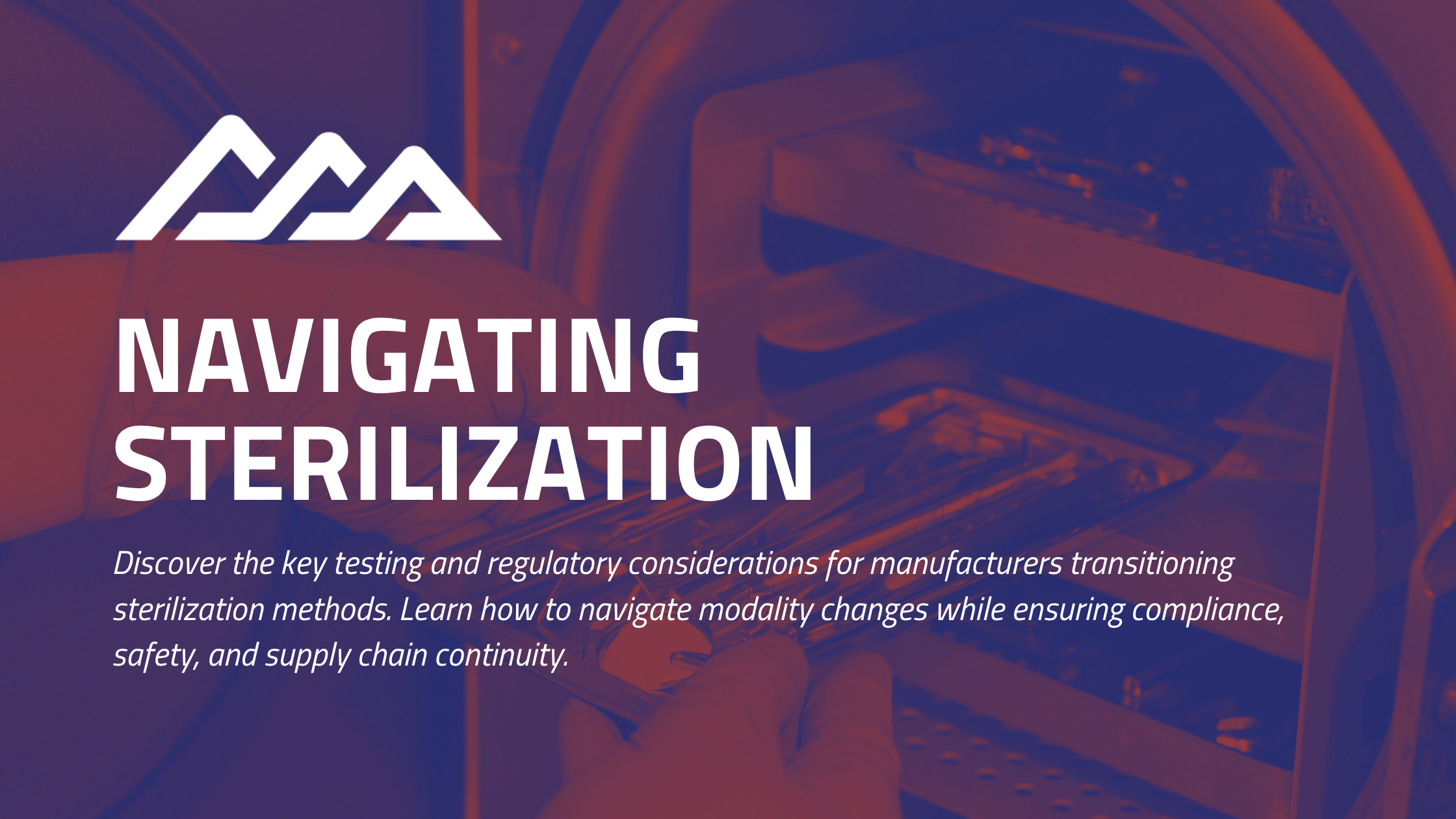Executive Summary
In today’s dynamic regulatory and supply chain landscape, more medical device and pharmaceutical manufacturers are exploring changes to their sterilization methods. These shifts are often driven by growing environmental concerns, evolving regulatory expectations, and logistical constraints in global sterilization capacity. However, transitioning from one sterilization modality to another is a highly regulated and technically complex process. This white paper outlines key testing considerations and provides expert insights to support a successful and compliant transition.
Introduction
Sterilization ensures that medical products are free from viable microorganisms. Traditional methods such as ethylene oxide (EtO), gamma irradiation, and steam have long been the standard. Yet, due to safety, sustainability, and supply availability concerns, manufacturers are reevaluating their approaches and considering alternatives such as X-ray, vaporized hydrogen peroxide (VHP), and electron beam (e-beam) technologies.
Changing a sterilization strategy involves far more than equipment updates. It demands comprehensive testing, validation, and cross-functional planning to maintain product safety, regulatory compliance, and business continuity.
1. Regulatory Landscape and Planning
Global regulators, including the FDA, EMA, and Health Canada, are closely monitoring sterilization transitions. Agencies increasingly require:
- Robust justification for transitioning to a new modality
- Equivalency data demonstrating sterility assurance
- Updated product registrations and technical documentation
Early engagement with regulatory bodies is essential. Pre-submission meetings and alignment on testing protocols can streamline approval and avoid costly delays.
2. Microbiological Validation Considerations
Any new sterilization strategy must demonstrate the same or greater efficacy in microbial inactivation. Key microbiological testing includes:
- Bioburden Evaluation: Quantifies initial contamination to inform sterilization dose.
- D-value and Z-value Studies: Measures microbial resistance to the sterilant.
- Half-Cycle Validation: Verifies process effectiveness under worst-case load and conditions.
- Sterility Assurance Level (SAL): Confirms a 10^-6 probability of non-sterility.
Comparative studies between old and new sterilization methods strengthen the regulatory case.
3. Material and Packaging Compatibility
Different sterilization methods interact uniquely with device materials. Incompatibility can lead to:
- Polymer degradation or discoloration
- Brittleness or loss of tensile strength
- Altered drug release profiles in combination products
Testing could include:
- Material compatibility studies
- Package integrity and strength testing
- Accelerated and real-time aging studies
4. Requalification and Operational Adjustments
Sterilization transitions often trigger requalification of processes and equipment:
- Performance Qualifications (PQ) are often required.
- Updated Standard Operating Procedures (SOPs) and training must be implemented.
- Environmental monitoring programs may need to be revised.
Facilities must also consider logistical implications, such as changes to shipping validations if sterilization occurs off-site.
5. Cross-Functional Collaboration
Testing and validation efforts must be supported by a multidisciplinary team:
- Regulatory Affairs: Interfaces with authorities and manages documentation.
- Quality Assurance: Oversees validation and compliance.
- R&D and Engineering: Evaluates material and product performance.
- Supply Chain: Ensures seamless implementation without disruptions.
Early and frequent communication among stakeholders reduces risk and accelerates time to market.
Conclusion
Transitioning sterilization strategies is a strategic move that can enhance safety, resilience, and sustainability. However, the complexity of testing and regulatory requirements necessitates a structured and data-driven approach. With the right planning and cross-functional alignment, manufacturers can make this transition efficiently while upholding the highest standards of product integrity and patient safety.
About the Authors
This paper was prepared by Canyon Labs, an expert provider of laboratory and regulatory consulting services, specializing in packaging and sterilization associated with medical device and pharmaceutical testing.
Contact us to learn how we can support your next sterilization transition.

